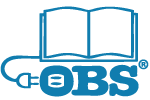As the immigrant population swells in the United States, the number of Americans growing up with English as a Second Language (ESL) has increased as well. While some debate whether one can be considered American if they do not speak the nation’s official language, the reality remains that in some U.S. public schools, over 40% of the student body speaks a language other than English at home.
Fortunately, significant strides have been made in recent years to provide support to America’s growing immigrant population. One of them, perhaps best illustrated by the public school system in Denver, Colorado, is the implementation of ESL support services in public schools for both students and parents. From offering live translators to accompany ESL students in classrooms, to publishing translated study and administrative materials for students and their families, the Denver Schools have developed an impressive, and comprehensive, program.
Colorado state law requires the written translation of English Language Acquisition (ELA) program documents or oral interpretation of ELA program meetings in languages with groups of over 100 school families. Textbooks are also to be translated for ELA students, and the law further stipulates that any special education documents and parent meetings must also be translated or interpreted. This is a wealth of material that, in a traditional translation environment, would cost a fortune for the schools to translate. But thanks to new Translation Memory (TM) software, Denver has been able to streamline their translation process. By creating a translated glossary of terms that grows with each new translation project, the TM allows terms that are repeated among publications to be automatically translated. This greatly reduces time spent on translation, and can also help to enforce a more consistent vocabulary among publications. And further, as Denver Public Schools demonstrate, a TM can help make public education more accessible to students of diverse backgrounds in the United States.
